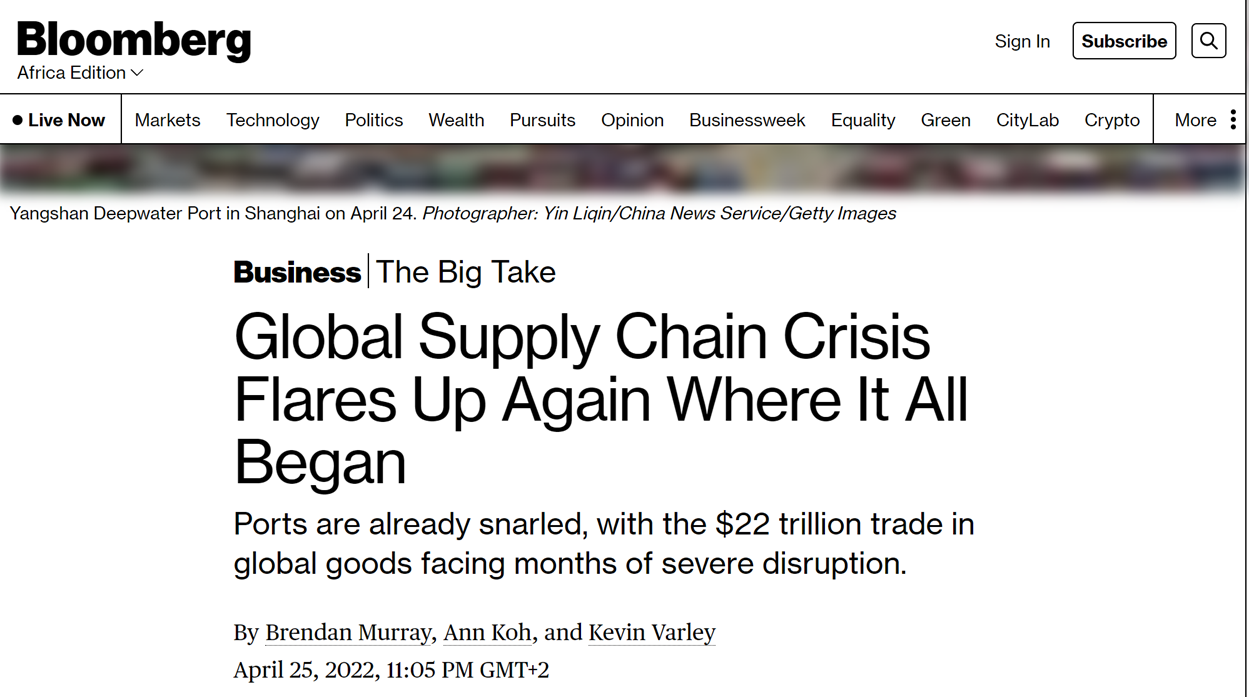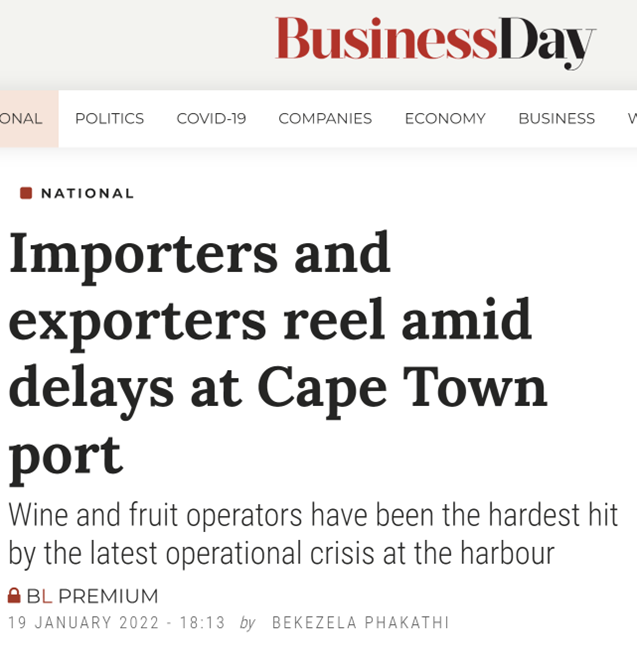SYNOPSIS: Having no visibility, real-time insights, or reliable data on business operations or the current status of your supply chains is conceptually not too far removed from driving blind. This article briefly explains some use cases and advantages of operational and supply chain visibility platforms and systems.
ESTIMATED READING TIME: 5min
You wouldn’t drive your car blindfolded, would you?

- Inability to see where you are going.
- Inability to see how the situation around your vehicle and inside the vehicle is changing in real-time.
- Inability to effectively make informed decisions in real-time or timeously execute corrective action to best adjust to the developing risks and changing situations around you.
- You are very likely to cause or end up in an accident, incurring costs, losses and liability claims, including but not limited to loss of life.

- Supply disruption due to lockdowns
- Cargo and freight handling delays, accidents and incidents
- Wastage, damages and shrinkage to perishable foodstuffs, fresh fruit and veggies
- Political unrest, riots and looting targeting the supply chain, transporters, and warehouses
- Import and export delays, shipping delays, border congestion and delays
- Counterfeit products, supply chain control gaps, shortages and stock-outages
- Natural disasters, flooding, transport infrastructure (ports, docks and roads inaccessible), unavailability of services due electrical outages, water bursting, etc
So what is Visibility?
This means a commercial customer has the ability to track-and-trace assets or inventory live and in real-time, e.g. from the point where the item/shipment leaves the farmer's, manufacturer’s, supplier’s, or service provider’s warehouse/distribution centre up to the point where it arrives at the destination, allowing you to keep track of the current location, condition, and status of these items throughout the journey.
- Visibility platforms are frequently used for supply chain visibility but can have other related applications, e.g. large and complex business operations. It is important to understand that the visibility requirements can vary somewhat between e.g. a logistics business/farmer/manufacturer/distributor/retailer/importer/exporter, which could be very different from the visibility requirements of a bank or a pension fund.
- Different technologies are on offer and the platform can obtain data via API, directly from telematics or other types of tracking IOT devices.
6 Reasons why your business needs visibility
- Transparency - having real-time end-to-end IOT visibility on where your operational assets/inventory/shipments are, with hyper-accurate location information, despite using numerous 3rd party logistics providers or channels, such as warehouses, handlers, or distributors in multiple locations
- Tracking important performance data - Key indicators such as transit time, stops and halt periods, loading times, or whether unauthorised pauses or unexpected delays occurred are all available on the fly. This provides you with knowledge, allowing you to forecast if your operational assets, inventory, or freight will arrive on time, ahead of plan, or behind schedule. And allows you to keep track of supplier performance.
- Auditability - Having an audit trail to prove real-time conditions of fragile or high-value inventory / perishable shipments. Knowing if the cargo was handled in accordance with SLA and or regulatory compliance requirements for the duration of the trip.
- Real-time condition reporting - Knowing the condition of your perishable/fragile shipments in real-time, and being able to pinpoint and allocate accountability for damage if and when it occurs.
- Real-time actionable insights to:

- Make fact-based decisions to respond to and manage exceptions,
- Reduce costs and minimise damage to fragile and perishable goods, shrinkage and or losses of high-value goods,
- Identify operational bottlenecks,
- Make data-driven decisions to develop business cases, mitigate risks or loss prevention strategies,
- Improve the quality of forecasting and inventory management,
- Maximise operational efficiency,
- Increase customer satisfaction,
- Improve profitability,
- Withstand and defend against disruption.

6. For rather obvious reasons, then, it comes as no surprise that research by the authoritative market intelligence and investment advisory firm, CBInsights, emphasised the importance of prioritising supply chain and operational visibility platforms as a focus area for retailers. What’s good for the goose …er retailer, is probably worth seriously thinking about for other players across different value chains and different industries, too.
So, if given a choice, you would not drive blindfolded, right? Where do you see Visibility adding the most benefit to your business?
Need more information? Want to start a pilot project? Please contact us

Photo-credits:
All media belongs to their respective owners.
Shark photo Jacob Owens + Warehouse Photo by Bernd Dittrich found on Unsplash





















